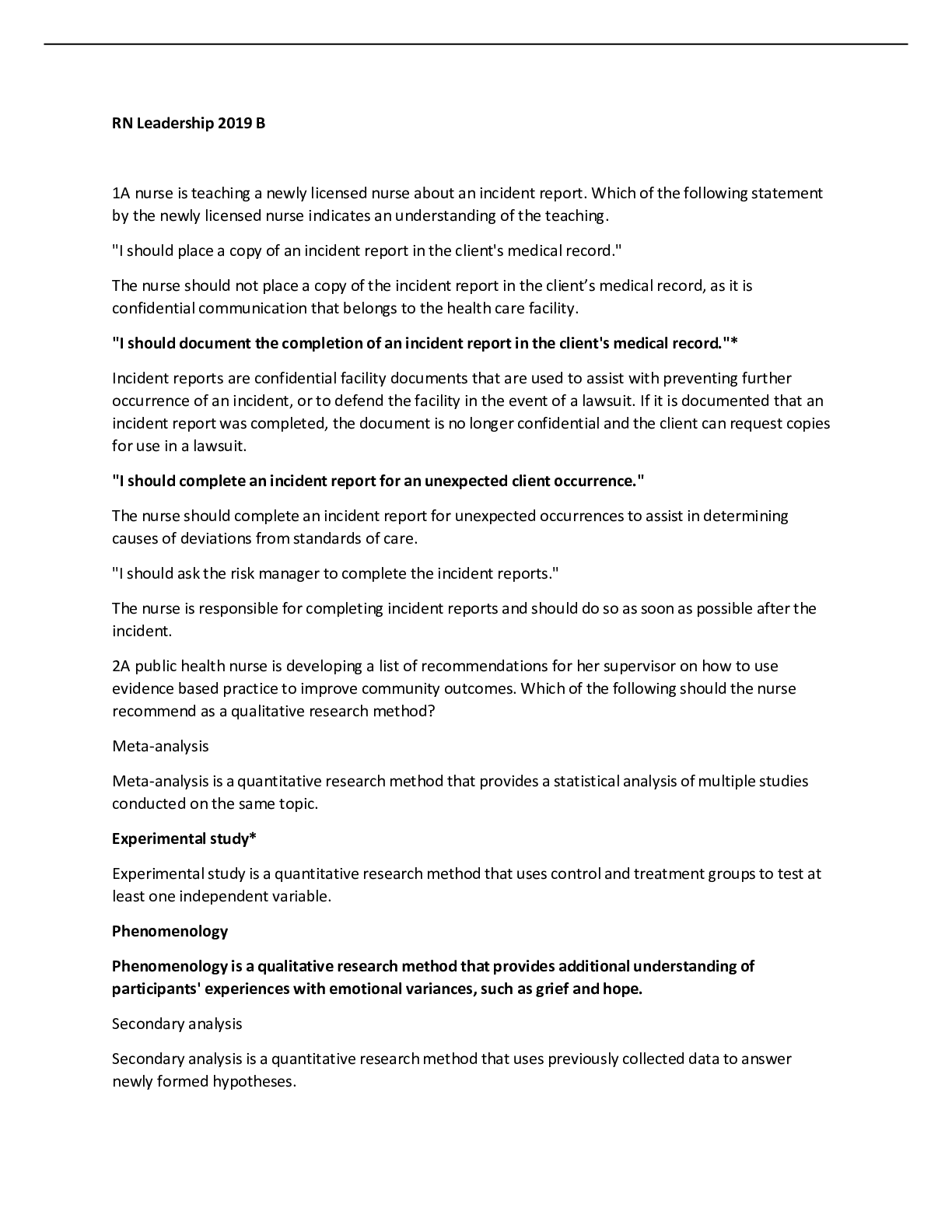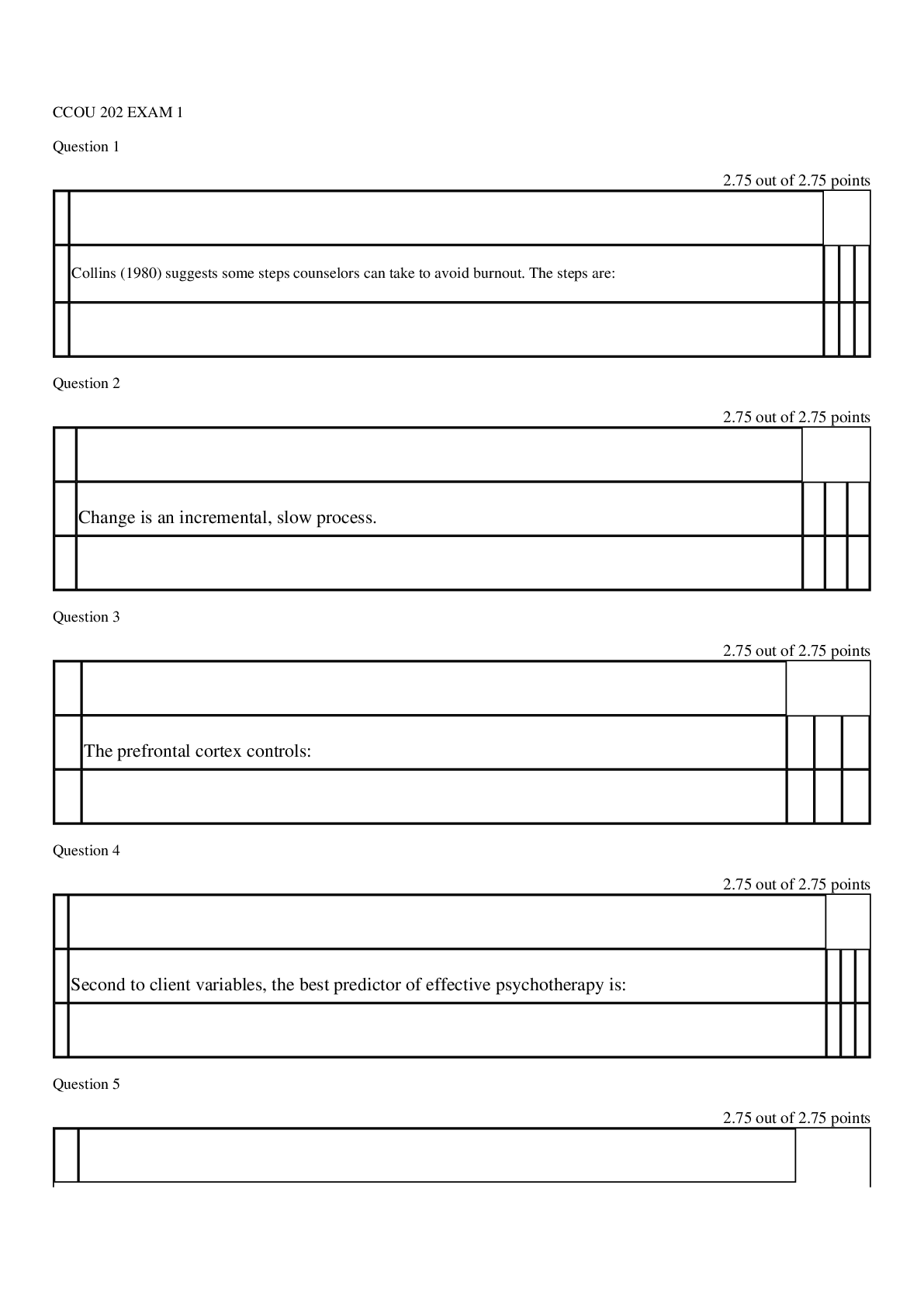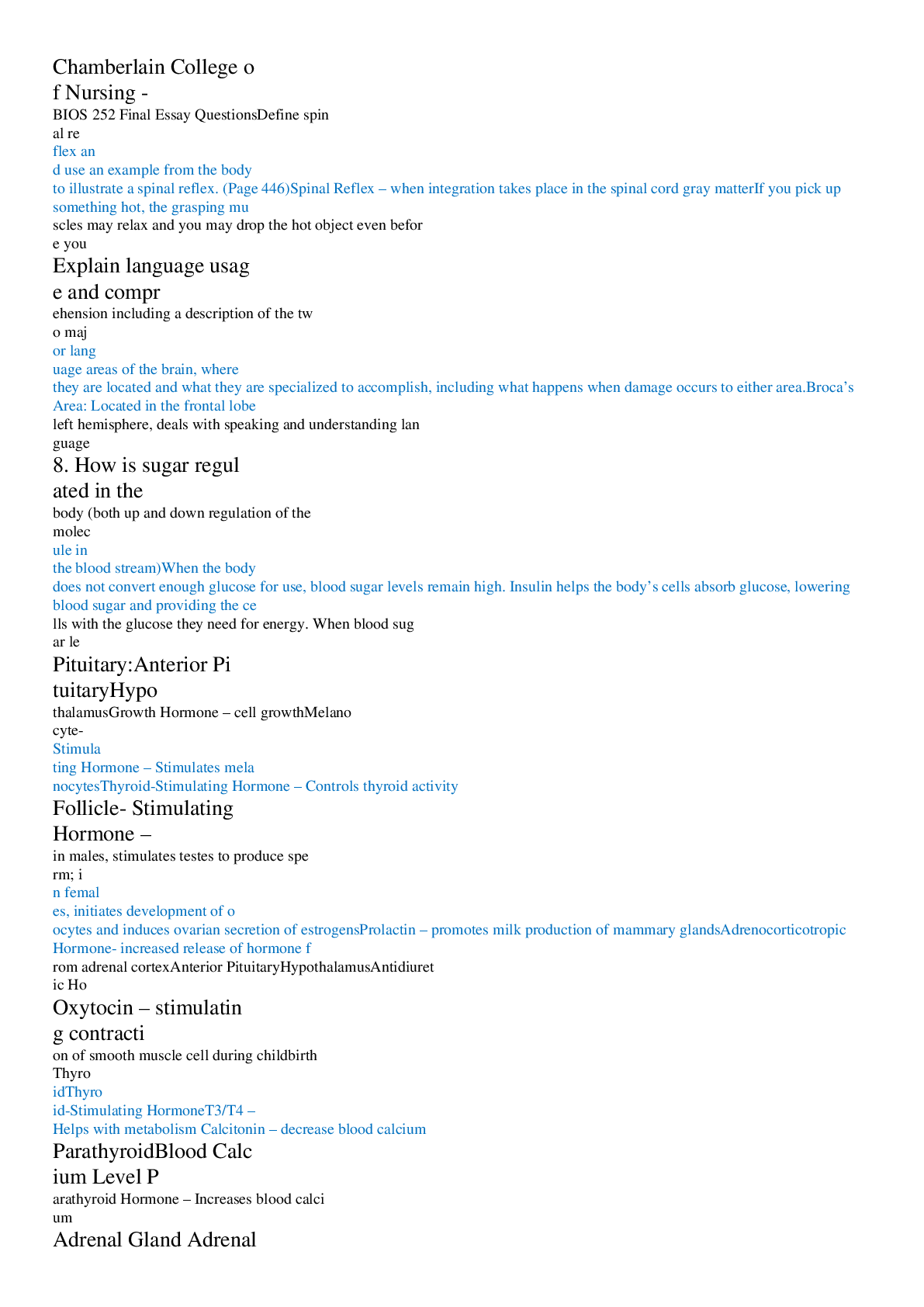*NURSING > EXAM REVIEW > Mental Health Final (All)
Mental Health Final
Document Content and Description Below
Introduction in Psychiatric Nursing Basic Brain Anatomy- what do the different part of brain control? Hypothalamus? Neurons/ synapse- pg. 51 Hypothalamus: Regulates temperature, blood pressure, per... spiration, libido, hunger, thirst, and circadian rhythms, such as sleep and wakefulness. Hypothalamic neurohormones, often called releasing hormones, direct the secretion of hormones from the anterior pituitary gland. Neurons: The brain is composed of a vast network of more than 100 billion interconnected nerve cells (neurons) and the supporting cells that surround these neurons. An essential feature of neurons is their ability to initiate signals and conduct an electrical impulse from one end of the cell to the other called neurotransmission. Synapse: This transmitter then diffuses across a narrow space, or synapse, to an adjacent postsynaptic neuron, where it attaches to specialized receptors on the cell surface and either inhibits or excites the postsynaptic neuron. Understand milieu therapy- can you describe it in a clinical setting? Milieu therapy: group therapy with similar illnesses involved. Promotes productive activity, self-respect, and individual responsibility. Uses total environment to treat. Enforces boundaries. Inpatient rehab. Describe the difference between mental health and mental illness Mental Health: A successful performance of mental functions, resulting in the ability to engage in productive activities, enjoy fulfilling relationships, and adapt to change and cope with adversity. Mental Illness: Are medical conditions that affect a person’s thinking, feeling, mood, ability to relate to others, and daily functioning. Basically, mental illness can be seen as the result of a chain of events that include flawed biological, psychological, social, and cultural processes. Maslow’s Hierarchy of needs (pg 31) • Physiological needs. The most basic needs are the physiological drives, including the need for food, oxygen, water, sleep, sex, and a constant body temperature. If all the needs were deprived, this level would take priority. • Safety needs. Once physiological needs are met, the safety needs emerge. They include security, protection, freedom from fear/anxiety/chaos, and the need for law, order, and limits. • Belongingness and love needs. People have a need for an intimate relationship, love, affection, and belonging and will seek to overcome feelings of loneliness and alienation. Maslow stresses the importance of having a family and a home and being part of identifiable groups. • Esteem needs. People need to have a high self-regard and have it reflected to them from others. If self-esteem needs are met, we feel confident, valued, and valuable. When self-esteem is compromised, we feel inferior, worthless, and helpless. • Self-actualization. We are preset to strive to be everything that we are capable of becoming. Maslow said, “What a man can be, he must be.” What we are capable of becoming is highly individual—an artist must paint, a writer must write, and a healer must heal. The drive to satisfy this need is felt as a sort of restlessness, a sense that something is missing. It is up to each person to choose a path that will result in inner peace and fulfillment. Peplau’s Theory of Interpersonal Relations Peplau’s Theory of Interpersonal Relations: emphasized that the nature of the nurse to patient relationship strongly influenced the outcome for the patient. Freud- what did he contribute to psychiatric setting? Sigmund Freud (1856 to 1939), an Austrian neurologist, is considered the “father of psychiatry.” His work was based on psychoanalytic theory, in which Freud claims that most psychological disturbances are the result of early trauma or incidents that are often not remembered or recognized. Freud (1961) identified three layers of mental activity: the conscious, the preconscious, and the unconscious mind. One of Freud's later and widely known constructs concerns the intrapsychic struggle that occurs within the brain among the id, the ego, and the superego. ..........................................CONTINUED...................................... [Show More]
Last updated: 2 years ago
Preview 1 out of 72 pages
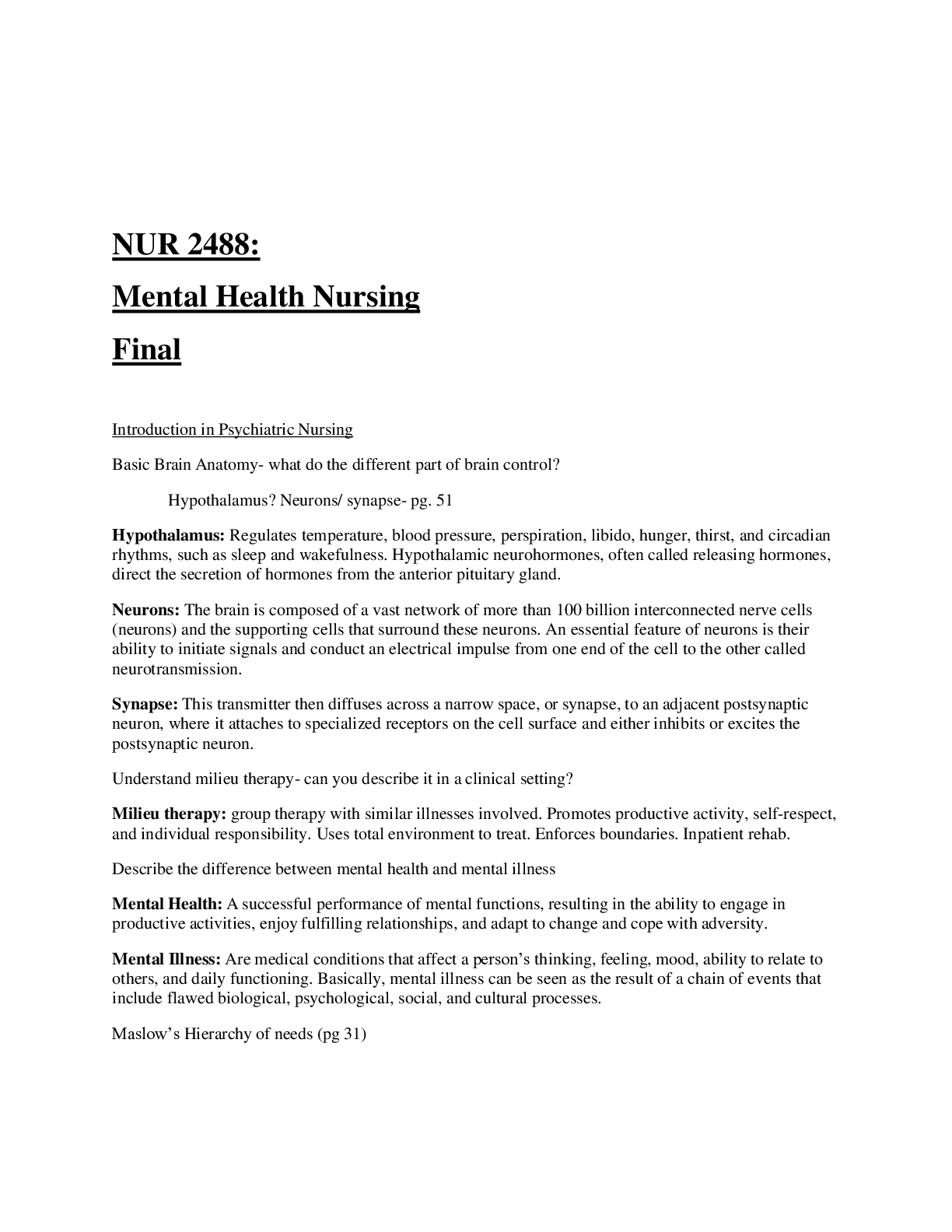
Buy this document to get the full access instantly
Instant Download Access after purchase
Buy NowInstant download
We Accept:

Reviews( 0 )
$11.00
Can't find what you want? Try our AI powered Search
Document information
Connected school, study & course
About the document
Uploaded On
Apr 27, 2021
Number of pages
72
Written in
Additional information
This document has been written for:
Uploaded
Apr 27, 2021
Downloads
0
Views
75

.png)
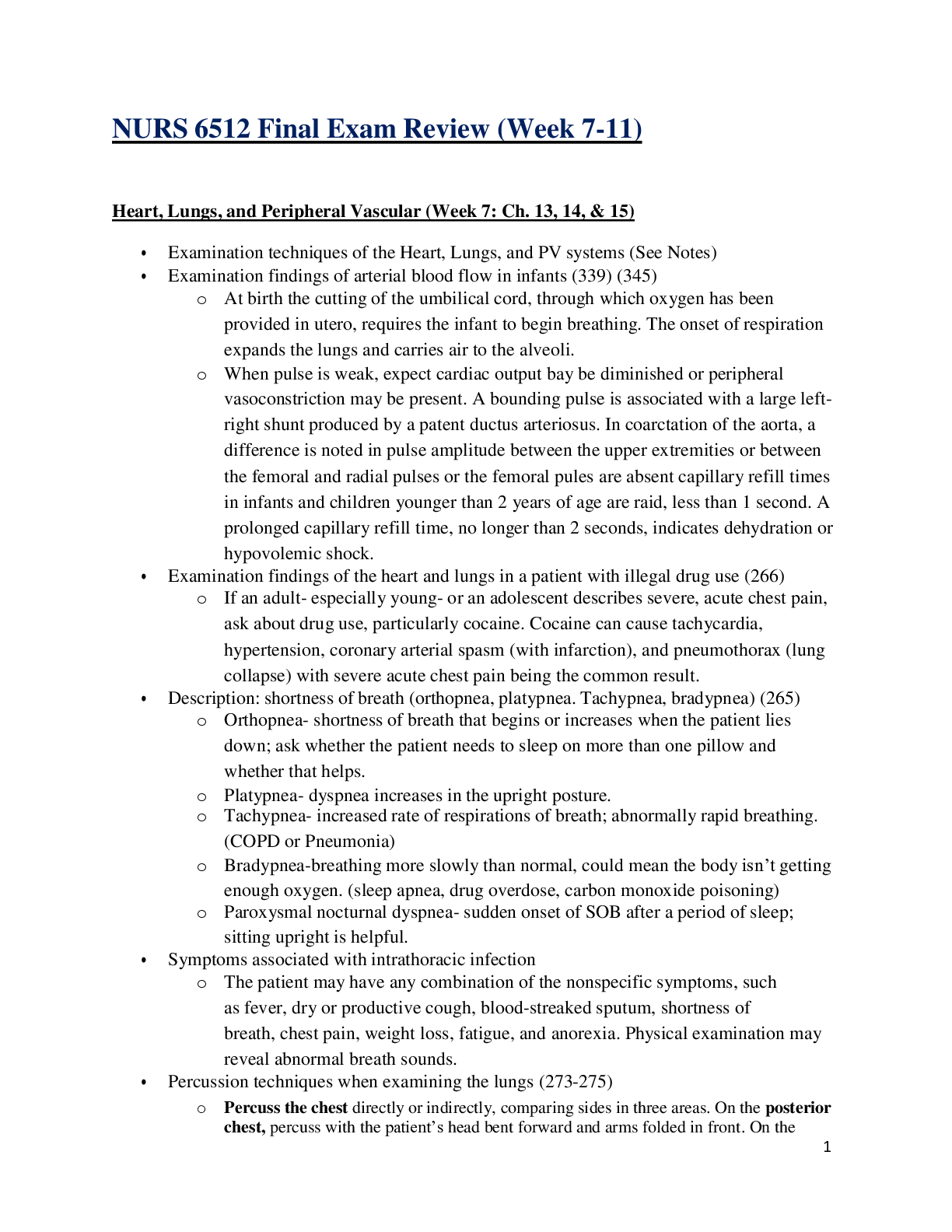
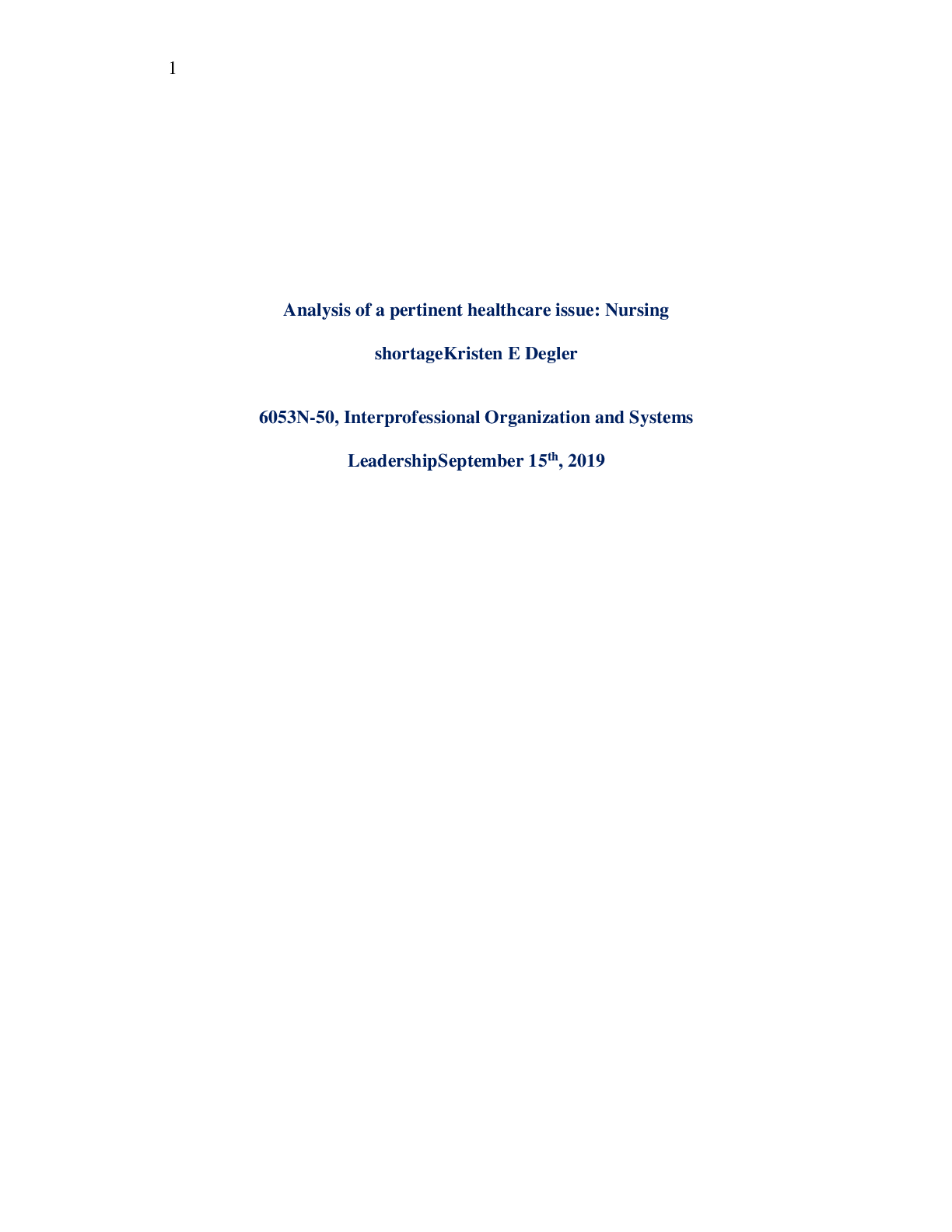

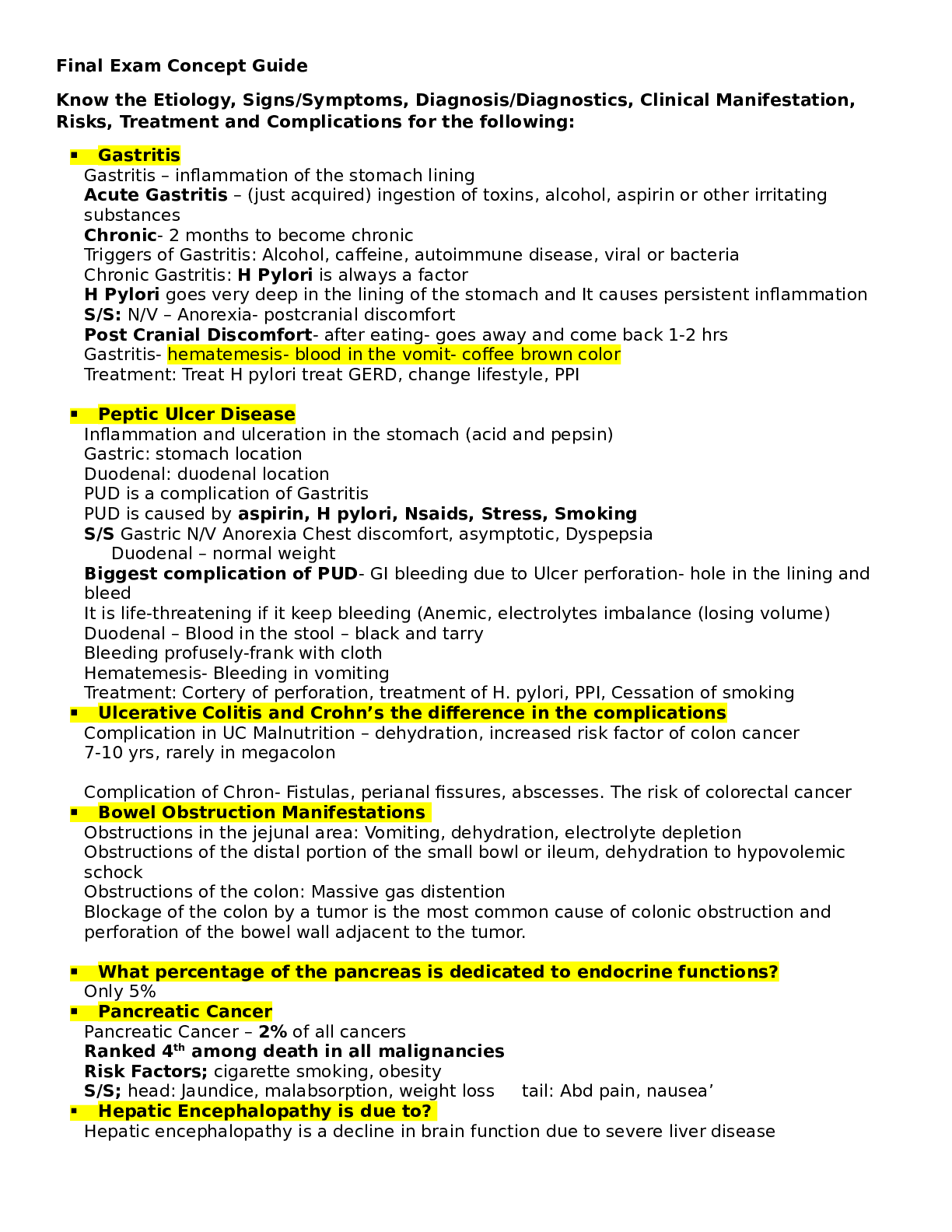

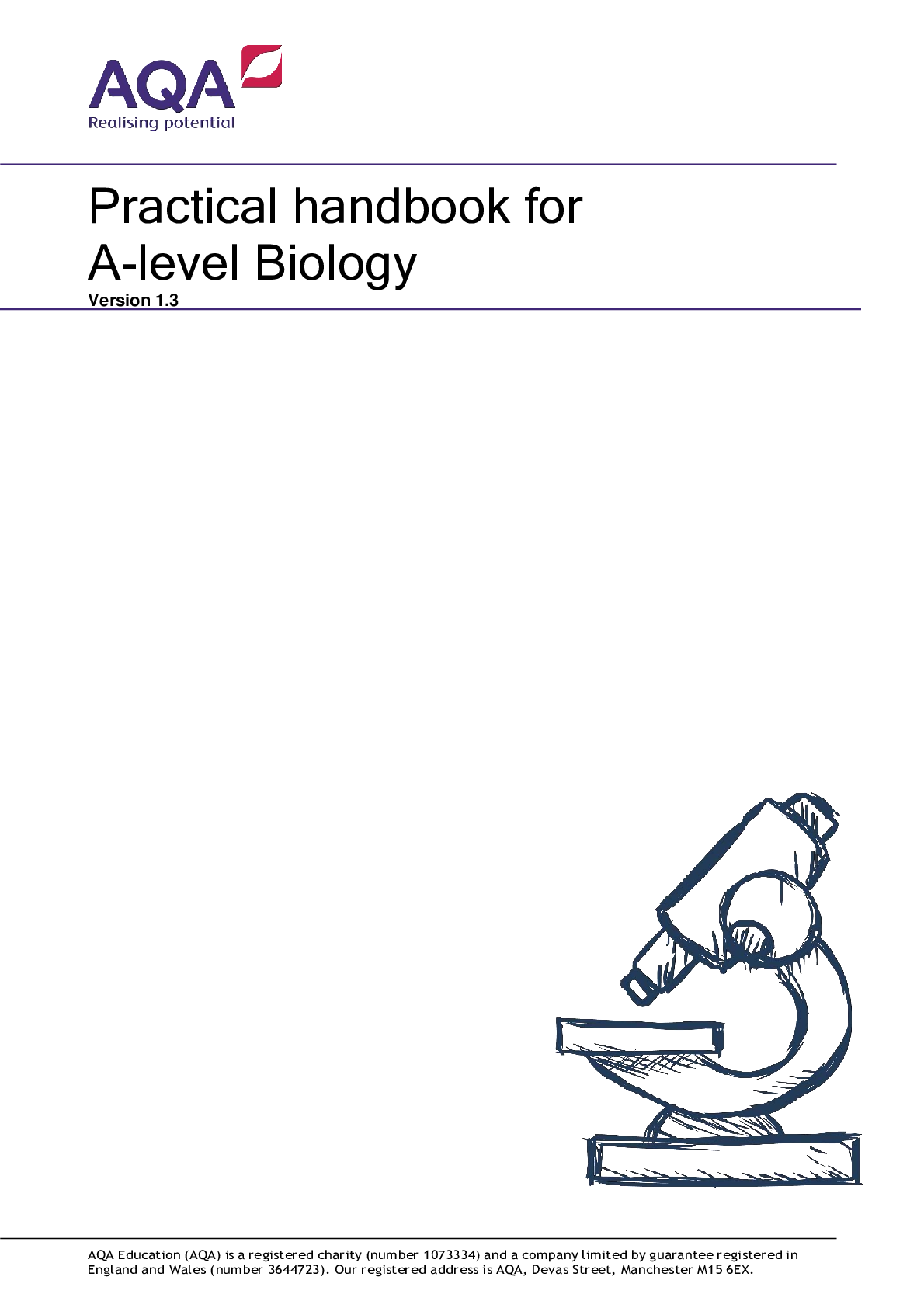
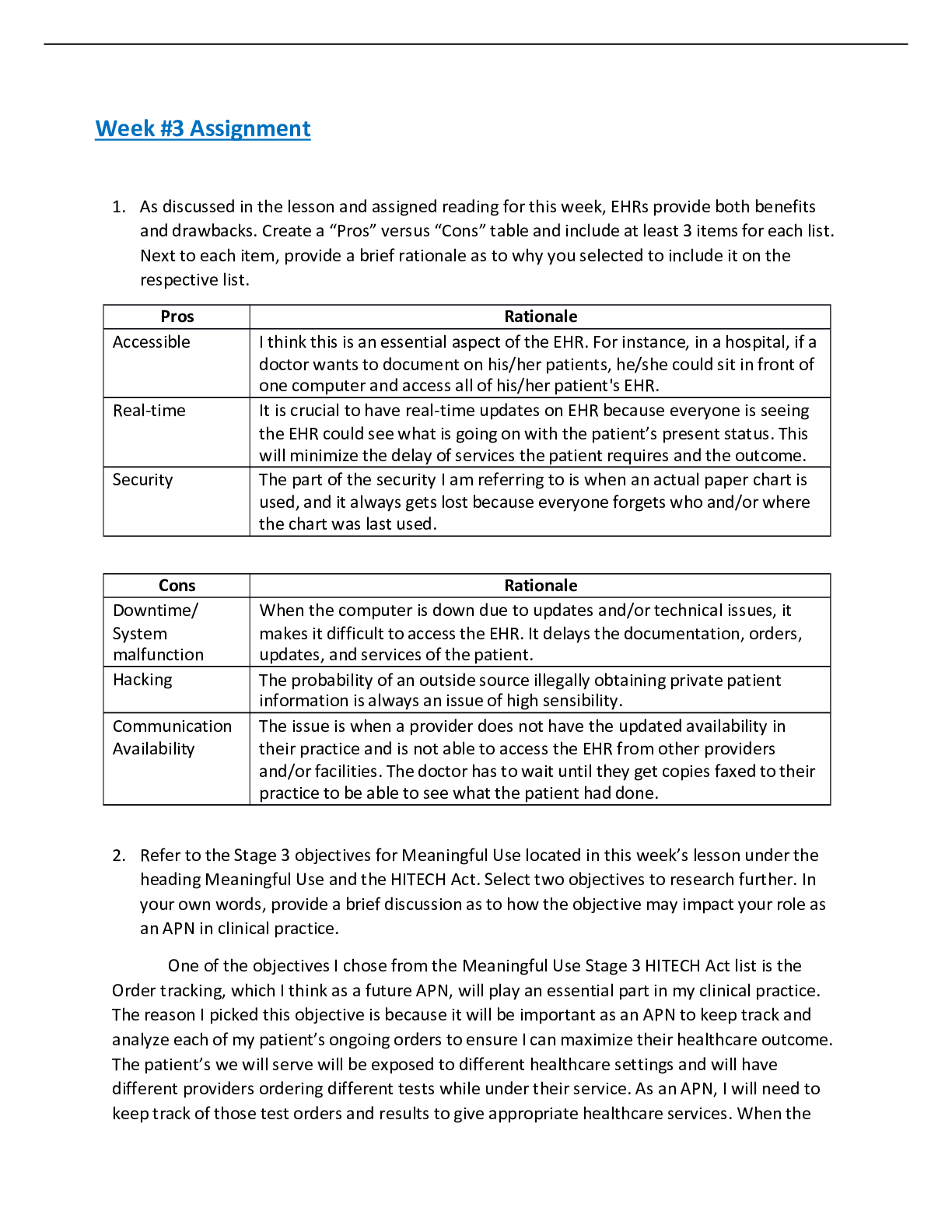


.png)

